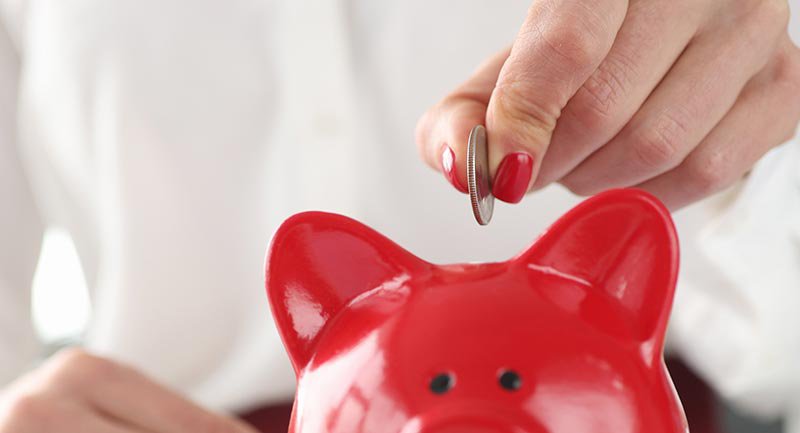How does your KiwiSaver account grow?
By MAS Team | 11 January 2022
There are many ways to grow your KiwiSaver account and help maximise your savings for the future. But how does your account actually increase, can it go down, and what can you do now to make a difference when it comes time to withdraw your funds?
KiwiSaver is a great way to help fund your retirement or first home deposit, but it’s not like a savings account - it’s an investment.
When you put money into a bank savings account, you’re just about guaranteed to get the full value of your deposit back, plus any interest it might have earned. An investment like a KiwiSaver account does not guarantee a fixed return, and there’s always the chance you might get back less than you put in if markets fall. The attraction of KiwiSaver is that it may produce a significantly higher return for your money over than long-term than you would receive from the bank.

Your KiwiSaver balance is invested in different ways depending on the risk profile of the fund you choose but the more aggressive funds will contain mixes of various types of assets, including shares and bonds. As the value of these assets grows, so does your KiwiSaver balance.
When you invest in a KiwiSaver scheme, your money is typically used to buy ‘units’ in a fund. Think of these as the portion of the overall fund that you own. As you contribute more money to your KiwiSaver account – or withdraw from it to retire or buy your first home – you’re actually buying or selling these units. The value of each unit changes over time as the things your fund is invested in change in value.
Each KiwiSaver fund has its own potential returns and risks, so you should explore all your options to help you choose the right KiwiSaver fund for you. You should choose a fund based on how comfortable you are with various levels of risk, and how long you plan to invest for.
You can generally change funds and scheme providers at any time (although some providers may have a limit on how many changes you can make, or charge you for them). It’s important to look into the fees, other features of your chosen scheme, and whether your money is invested responsibly, if that’s important to you.
If you’re employed, in most cases you’ll automatically contribute to your KiwiSaver fund out of your wages. You can choose how much you contribute – from 3%, 4%, 6%, 8% or 10% of your total income before tax.
You can also make additional voluntary contributions at any time to your KiwiSaver fund through your online banking or Inland Revenue.

If you are contributing to KiwiSaver via your employer, your employer must contribute a minimum of 3% of your pay to your KiwiSaver. This may be on top of your normal salary or wages but, if both you and your employer agree to it, it can be taken out of your total salary package. When you start a new job, you should clarify this with your employer.
The Government will also contribute to your KiwiSaver account, contributing up to $521.43 a year.
To receive the maximum contribution from the Government, you must have contributed at least $1,042.86 of your own money in the period between 1 July - 30 June. This works out to be $20 a week. Even if you don’t contribute that much within the year, the Government will still put in 50 cents for every dollar you add to your KiwiSaver account.
There a couple of exceptions to this. If you join KiwiSaver partway through the July-June year, you won’t be able to receive the full Government contribution. Also, you need to be at least 18 so if you turn 18 during the year, the Government contribution will be lower.
Your KiwiSaver provider aims to grow your balance over time. However, your balance will probably fluctuate over time, which means some drops. For example, lots of Kiwis saw their balances fall early in 2020 when the Covid crisis hit.
It’s important to think of KiwiSaver as a long-term investment and stay the course. If you’ve picked the right fund to suit your financial goals, you should be able to weather temporary drops in your balance.
Medical Funds Management Limited is the manager and issuer of the MAS KiwiSaver Scheme (the Scheme).
A copy of the Product Disclosure Statement (PDS) for the Scheme can be found here.
This article provides information of a general nature only and is not intended to be financial advice. If you would like to talk to a MAS adviser, phone 0800 800 627 or email us.

11 November 2021
Choosing the right KiwiSaver fund can help you balance your financial goals with a level of risk you're comfortable with. Here's a breakdown of some of the main things to consider when you're making this decision.

2 December 2021
Find out how to choose a responsible KiwiSaver fund that has the potential to give you good returns while aligning with what you believe in.

14 April 2021
If you're planning on buying a home in the future, good news – KiwiSaver can also be used by first-home buyers to get on the property ladder. Here's what you need to know to get the most out of KiwiSaver.